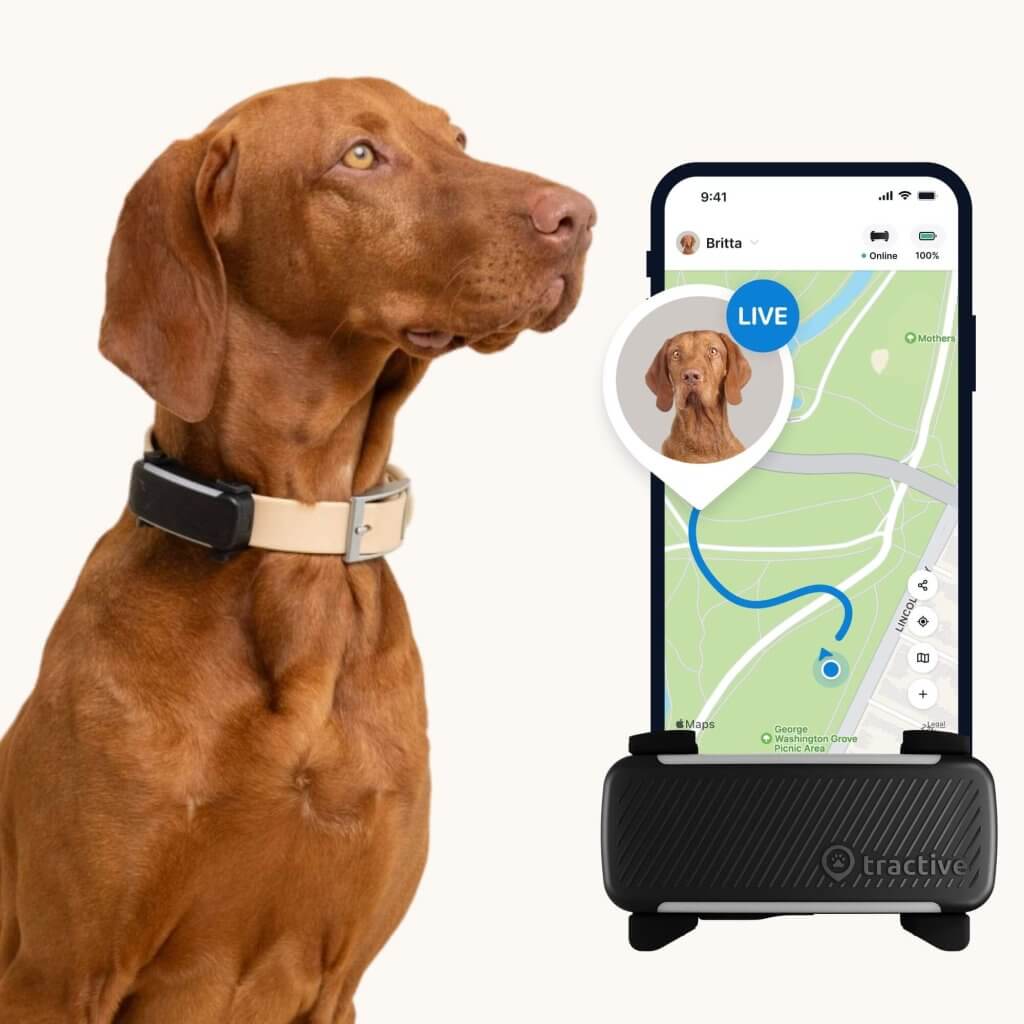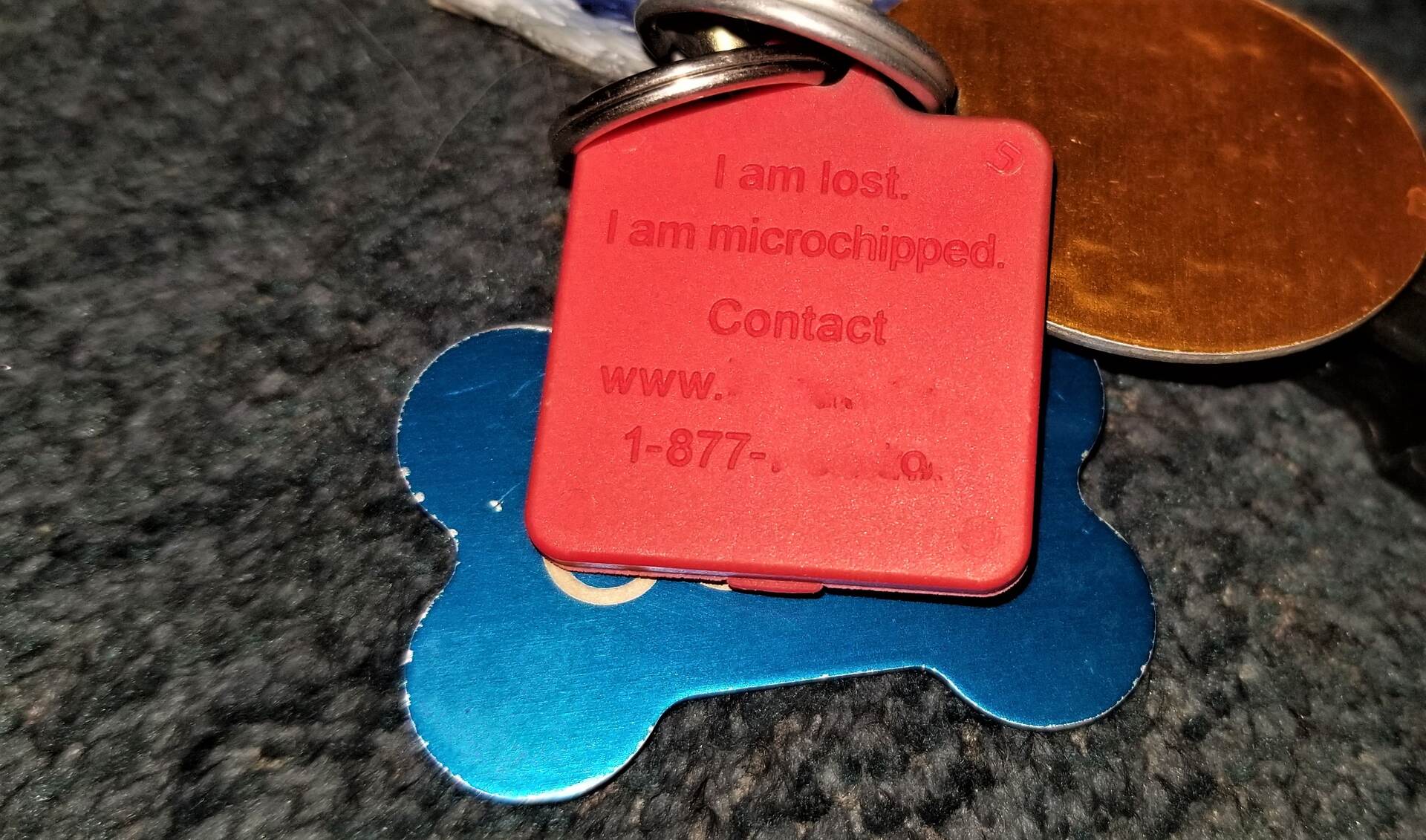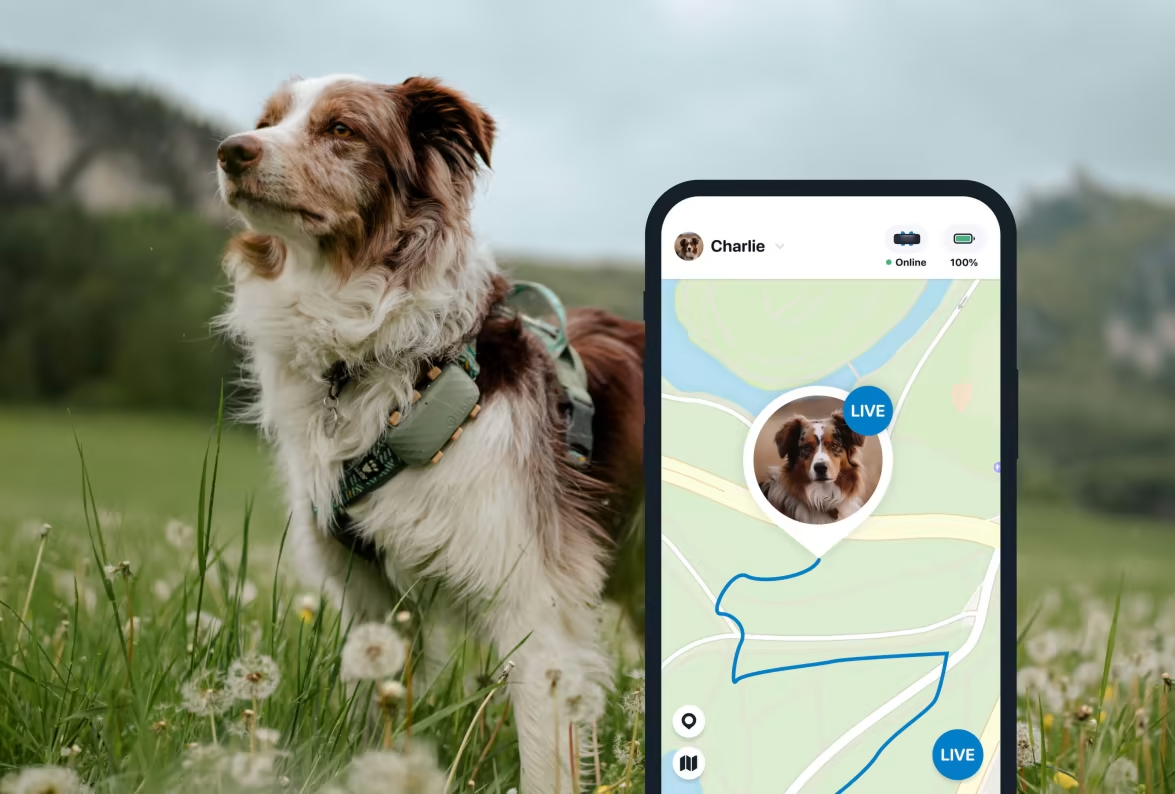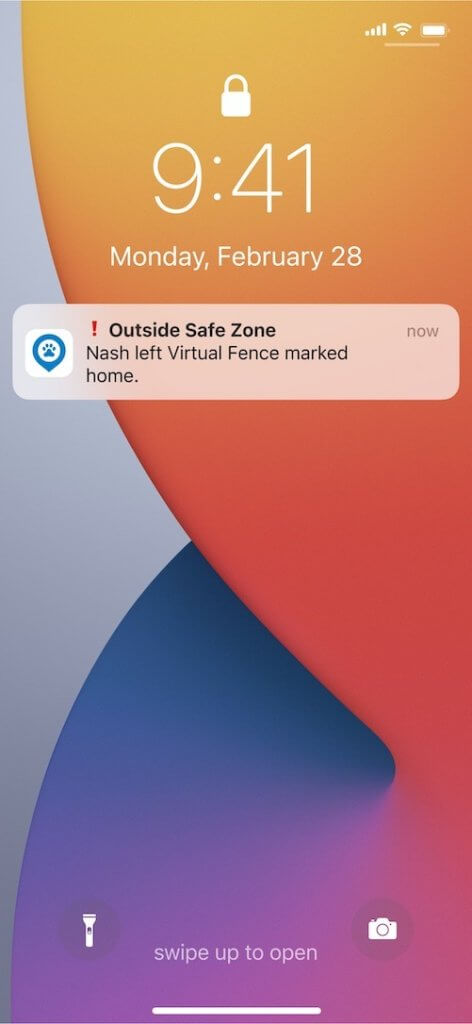Dog ID Tags: Not Your Only Option For Keeping Them Safe
With a dog ID tag attached to their collar, you're that much more likely to be reunited with them. But what if your buddy runs into a pet thief...or their ID tag gets smudged or lost?
If your buddy gets lost, the last thing you want is for them to be missing without the proper dog ID tags attached to their collar. But are they enough to reunite you two? Just a tag on their collar might not be enough if they’re stolen. Or it might just get smudged or fall off – and now there’s no way to recognize you as their owner.
So besides an ID tag, we’d always recommend you plan ahead for a way to actively track down a missing dog if the situation ever arises. (Ideally, in real-time – and over an unlimited range.) So you can follow your buddy’s every step – as they make their every step.
Key Takeaways
Dog ID tags might be required by law, depending on where you live. They’re also one of the first ways to ensure someone finds your lost dog and returns them to you.
Besides a dog ID tag, a microchip works as a permanent ID tag for your dog. Microchips are also less likely to fall off or get smudged.
Neither microchips nor ID tags can actively help you find your dog – only identify them.
A smart dog tracker with real-time GPS tracking can help you actually track down your missing dog – in real-time. It’s a much more proactive and helpful emergency measure during a “lost dog” situation.

Always know your buddy is healthy & safe
Read more- Key Takeaways
- Why are dog ID tags important?
- Why it’s a good idea to also get your dog a microchip
- When should you get ID tags for your dog?
- Is it illegal for a dog not to wear a collar tag?
- What legally needs to be on a dog tag?
- What info should appear on my dog’s ID tags?
- What kind of dog ID tag is best?
- Where can you get dog ID tags?
- How you can prevent your dog from getting lost
- The downsides of microchips & ID tags
- Where a smart dog tracker with real-time GPS can step in
Why are dog ID tags important?
One out of every three dogs will go missing at some point in their life1. But with an ID tag attached to their collar, they’re now easier to identify. It’s the first, basic step you can take to dramatically increase the odds that they’ll be returned to you quickly. Else, microchipping and social media are all great ways to find your lost dog.
💡Imagine yourself coming upon a dog that looks lost. What’s the first thing you’ll do, after looking around for a panicked pet parent? That’s right, you’d most likely first check the dog for ID tags. One quick glance will reveal the owner’s phone number. You make the call and instantly hear the relief in the owner’s voice. Their dog is safe. Tags indicate to a stranger that the lost pooch belongs to someone, rather than being a stray. People may be more likely to approach a tagged dog and help it find its way back home.
Why it’s a good idea to also get your dog a microchip
We’d always suggest you equip your buddy with both a microchip AND an ID tag. (For that extra layer of security.) A microchip is a tiny device around the size of a grain of rice. A vet can implant it in under 10 minutes under your dog’s shoulder blades. (And nope, it doesn’t hurt – plus it’s a relatively affordable, accessible procedure.) Once you include your contact details on the microchip database, you now have a permanent ID tag on your dog that’s never at risk for falling off or getting smudged.
Now if your dog gets lost and a helpful stranger brings them to a vet or an animal shelter, they can scan your dog for a microchip. If your contact details are updated, they can contact you to inform you they’ve found your dog.
⚠️ Just remember: both dog ID tags and microchips are only identification tools. Meaning, they can’t help you take an active role in actually tracking down your missing dog. That’s where a smart dog tracker with real-time GPS tracking can be more helpful emergency measure.

Follow your dog anywhere
Get real-time location information, wherever they go. And find out when they try to make an escape, or just when they go somewhere they shouldn’t, with Virtual Fences.
When should you get ID tags for your dog?
As soon as you acquire your dog, get a set of pet ID tags for them. The process of bringing home a new pet introduces all kinds of scenarios for the dog to escape. Your new pup may not be used to traveling in a crate, wearing a collar, or walking on a leash, increasing the odds of a tug of war that you could lose. And running off in a new neighborhood will just confuse your new pet – and since they’re not 100% familiar with you or their new “home” yet, they might not be able to find their way back to you.
Read More: Why Do Dogs Run Away? [+How To Never Lose Your Dog Again]
Is it illegal for a dog not to wear a collar tag?
Some countries, such as the UK, legally require all dogs to wear a pet tag with their owner’s name and address. Likewise, many municipalities in the US have laws requiring your pet to wear a tag with proof of rabies vaccination. If you’re not sure what is required in your area, your veterinarian’s office or local animal shelter can provide answers.
What legally needs to be on a dog tag?
Requirements vary, but if dog tags are mandated by law, they most likely require your phone number and some type of identifying information, such as your city or county. Remember to update the pet tags if you move or get a new phone number.
What info should appear on my dog’s ID tags?
Along with legally required info, feel free to squeeze as much information as possible on the tag, as long as it’s legible. Here are some ideas to get you started:
- Your phone number
Your mobile phone is the obvious choice, plus a second phone number as backup. If your pet goes missing, turn your phone’s ringer up to full volume, and turn off the feature that silences unknown callers. - Geographic area
Experts recommend listing only your city on the pet tag, not your complete address. - Microchip information
You can add a tiny tag to your dog’s collar that says “I’m chipped” so that anyone finding your pet knows that reading the chip is an option if you can’t be reached by phone.

- Vaccination information
The rabies tag provided by your veterinarian should be attached to your dog’s collar if required by law. This signals to people who encounter your escaped dog that this pooch is vaccinated and well cared for. - Your name
Consider listing your first name only on the dog tag, right next to your phone number. There’s no need to include your last name. - Medical conditions
Adding the phrase “I have medical conditions” to your dog’s ID tags adds urgency for whoever finds your dog to return them to you as soon as possible. If you can, try and include your vet’s phone number in case your pup is found with injuries that need immediate attention. Or add a Medical Alert tag which includes information about your pup’s specific medical conditions.
What kind of dog ID tag is best?
Any type of dog ID tag is better than no pet tag at all. Dog tags need to attach to something, usually a dog collar or harness. If you swap collars or harnesses often, consider making a set of tags for each collar or harness. Or buy clips that allow you to switch the entire set of dog tags to another collar or harness.
- Custom engraved metal tags are readily available, inexpensive, and durable.
- Custom engraved plastic tags, which come in many colors, are another option, although they may get damaged more easily than metal tags.
Some pet parents dislike the jangling noises made by the metal pet tags that attach to their dogs’ collars. You can purchase dog tag silencers to reduce the noise. These tiny plastic pouches are dog friendly and fit over the dog tags to eliminate jangling while still allowing the tags to be readable.
An alternative to jangling tags is a dog collar tag. Collar tags slide onto the dog collar and lay flat, creating a tidier look for your pooch. Another option is to have your information embroidered onto a custom-made dog collar.
Where can you get dog ID tags?
Major pet stores have dog tag engraving machines where you can create your pet’s own custom dog tag in a matter of minutes. These engraving machines offer a basic, inexpensive way to keep your pet safe.
Of course, you can find all kinds of fancy dog tag options from many online retailers.
How you can prevent your dog from getting lost
- Double down on your buddy’s recall skills training
Teaching your dog to come when called is arguably the most important safety skill you can teach your pup. You can learn basic training techniques at obedience classes, with books, or with videos online. But make regular training a priority – especially for the basic dog commands. - Keep your pup on a lead
Allowing your pup to run off leash increases the chance that they will get spooked or intensely interested in something, leaving you holding the empty leash as they dash away. - Invest in secure dog fencing
If your dog spends time in the backyard, make sure your fences and gates are in good condition. Check for spots when your pooch could wriggle under the fence, and make sure that your gate latches securely.
The downsides of microchips & ID tags
Microchips (and obviously ID tags) don’t come with real-time GPS tracking or any location capabilities. All it does is help someone with a scanner identify your dog – not actually, well, help you find them.
So with just ID tags or a microchip, you’ll have to wait and hope and pray a kind stranger brings your lost dog to a vet or a shelter. Next, you’ll have to hope the staff there have a microchip scanner to find your contact details…and then actually get in touch with you to inform you they’ve found your lost dog.
Which, in a world where dognapping is on the rise, is never a 100% guarantee. (Especially if your buddy is a rare breed or hasn’t been spayed or neutered yet.)
Read More: Microchip vs GPS Dog Tracker: Debunking The Myth Of The Dog Tracker Chip
Where a smart dog tracker with real-time GPS can step in
While ID tags and microchips are great for proving who your dog is, they’re not much help when you’re frantically searching for them. They’re more like a “just in case” plan – they only work after someone finds your dog. This is where a smart dog tracker with real-time GPS, like the Tractive GPS, steps in and completely changes the game.

Strapped to your dog’s collar, you can now:
- Track your missing dog’s every step – in real-time
Tractive’s “Live” mode updates your dog’s location every few seconds. You can literally watch their path on a map. (Crucial if they’re moving fast or have run off in a panic.) Unlike an AirTag, your Tractive device doesn’t need a network of compatible devices to work. Nor are they limited by range. - Set up safe zones around your house or yard
From your Tractive mobile app. Now if your dog wanders out of this area, you’ll get an instant escape alert on your phone. This gives you a head start to find them before they get too far.


- Figure out where your dog likes to hang out
From their Heat Map and Location History. This keeps a record of where your dog has been. So you can figure out their usual escape routes or favorite hiding spots, so you can be better prepared next time. - Find your dog on the darkest nights
If your dog is hiding or it’s dark outside, you can trigger a light or a sound on the tracker from your phone. This makes it so much easier to spot them, even from a distance.
Think of it this way: instead of waiting by the phone hoping for a call, you can be actively tracking your dog’s location on your smartphone. No more guessing, no more wasted time searching in the wrong places.
Along with a dog ID tag and a microchip, a smart dog tracker puts the power to find your lost dog back in your hands. Giving you peace of mind and greatly improving your chances of a quick and happy reunion.



